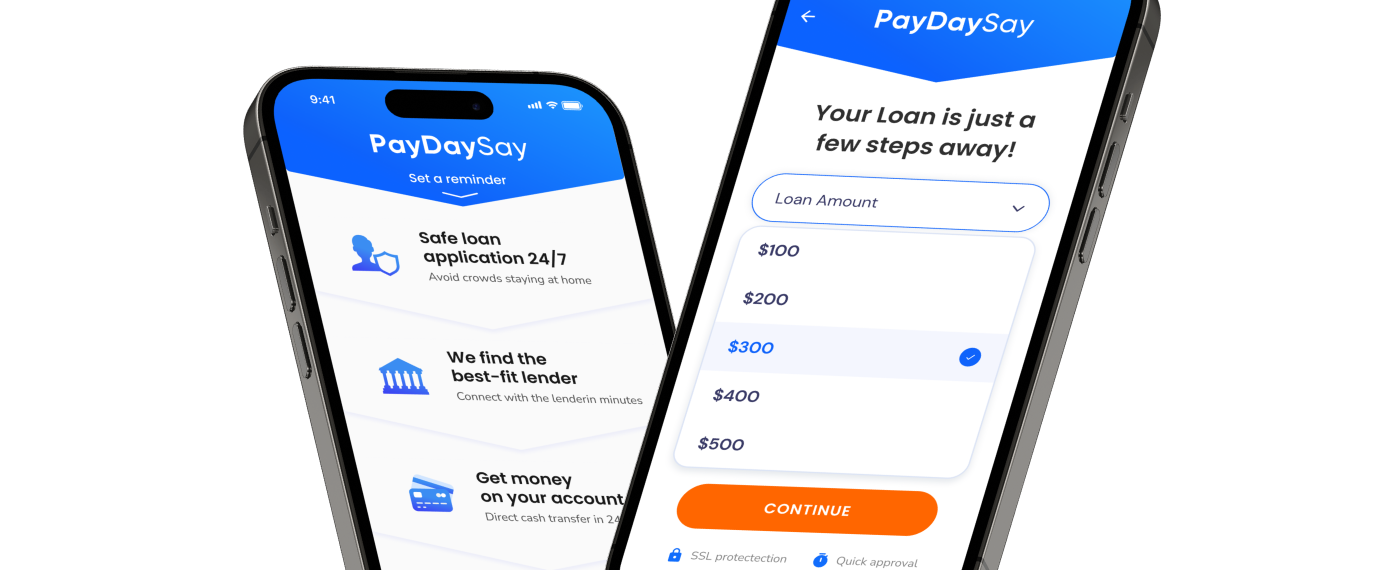A credit score is a significant indicator for every American. Lenders use it to decide whether to lend you money, and landlords use it to determine how much of a deposit to set for you and your potential employers. If your score is 680 on FICO or Vantage, you have a “good” rating.
However, it’s essential to understand that as little as 10 points and you’ll already find yourself in the category of borrowers with fair credit who are having trouble getting new loans.
Let’s find out what terms you can get with your rating. We will mainly use the FICO score as it is used by 90% of lenders.
Is 680 a Good Credit Score?
Overall, 680 falls into the good range, but the average FICO score in the US is 709. What does this mean? You have a high chance of being approved for any loan, including a mortgage, but your rates won’t be very favorable.
For example, you are unlikely to get credit cards with 0% APR or personal loans with 6%-8% APR. Therefore, you should read the terms and conditions of the loan agreement carefully and not use the first offer or an instant money app you come across but compare different lenders to choose the best option.
In addition, you should make sure that you pay all your loans on time and do not close any open credit accounts so that your rating does not drop drastically and you will not end up in the fair credit category.
It is also important to remember that hard inquiries can take away from 5 to 15 points from you, which can also cause you to fall back in the credit score range. That is why you are better off applying for loans only to financial institutions that do soft credit checks.
We recommend increasing your FICO score to get better offers on all types of loans. Although with such a rating, you can qualify for most loans, borrowers like you are only 10% of the people who got a mortgage; everyone else had a higher score. Not all lenders will lend to your loan application, and every rejection is a few points off.
Why Is Your Credit Score 680?
The FICO score is calculated according to a complex scheme that produces a unique result for each borrower. However, the criteria considered in the calculations are known and clear:
- Payment History. Every late or missed payment can lower your rating significantly because it represents 35% of your FICO score.
- Credit Utilization Rate. This indicator tells you how much of your available credit you are utilizing. For example, if your total limit is $10,000 on all your credit cards and other accounts, and your credit card debt is $3,000, your credit utilization rate is 30%. Do not close your existing credit accounts so that this figure does not lower your FICO score, as it accounts for 30% of your final result.
- Length of Credit History. The longer you have used your credits, the more this indicator gives you points. It accounts for 15%.
- Credit Mix. The FICO score will be higher for those borrowers who use different types of loans, such as installment loans, credit cards, and mortgages. This figure affects 10%.
- New Accounts. Every lender who makes a hard inquiry before lending you money sends an application to the credit bureau. A record of this remains on your credit report and is available to other creditors. Financial advisors recommend taking out only one loan at a time because recent credit activity can lower your score and affect 10%.
All but the last metric are long-term, so you should monitor them throughout your life and try to improve them. As a result, you will save thousands of dollars on better credit terms.
Can You Get a Mortgage or Home Loan with a 680 Credit Score?

Buying a house without a loan is challenging, as it can cost hundreds of thousands of dollars. However, if you buy it on credit, you agree to have monthly payments for the next 20-40 years.
Therefore, to avoid worrying about whether you can repay the home loan on time throughout the entire term, we recommend choosing the lender with the best offers for you and, of course, trying to increase your rating.
It is important to note that even with a credit score of 680 points, you can apply for all types of mortgages, as the lowest rating home loan lenders allow is 580 points. Therefore, depending on your FICO score, you can take advantage of different types of such loans:
- Conventional 97 is available for anyone with more than 620 FICO points and a 3% down payment. In contrast, the conventional loan requires a 5% down payment.
- You can choose an FHA loan if your FICO score is 580 or more and provide the 3.5% first payment.
- If you don’t want to provide the down payment, you can take out a VA loan (the required FICO score is 580) or a USDA loan (you need at least 620 FICO points).
As you can see, your points allow you to choose any of the previous options, but usually, borrowers with this rating will choose an FHA loan or a conventional loan.
However, remember that the final interest rate and the lender’s decision to give you a loan depends not only on your FICO score but also on your income level, amounts borrowed, and employment.
Can You Get an Auto Loan with a 680 Credit Score?
With this rating, you can get almost any car loan at a favorable APR, as the minimum threshold is typically considered a 661 FICO score. Generally, the maximum amount you can expect with a FICO score of 680 points is between $50,000 and $100,00, and the ideal APR in such a case is 6%-8%.
It is important to remember that two people with the same rating may receive different terms from lenders because, in the end, income, debt-to-income ratio, credit utilization ratio, and availability of formal employment also influence the decision to grant credit.

Can You Get a Personal Loan or Credit Card with a 680 Credit Score?
A personal loan is an installment loan usually used for any legitimate individual purpose, such as home renovations or debt consolidation. It will be easy for you to get such a loan or to apply for a credit card with a credit score of 680. Then, you can go to a bank or any other financial institution and get an offer with an average of 10-14% APR.
Even if your bank refuses to give you a loan or a credit card, or if you want better terms than they offer, you can turn to online lenders. They have less stringent requirements and give out loans faster, but at the same time have higher interest rates and shorter repayment periods.
Try to go to lenders that work with borrowers with a 620 or higher score, as they usually have the most loyal requirements for your credit score category. If you go to a financial institution that works with bad credit, you will likely have a narrower range of offers and a higher APR.
Disadvantages of 680 Credit Score
While a score of 680 is considered good, you are only 10 points away from being in the fair credit category, which can easily be lost when applying to a lender who conducts a hard credit check.
Therefore, if you want to take full advantage of a consistently good score, you should increase your rating even slightly. That way, your credit application will be rejected less frequently, and you will get better interest rates and offers from lenders.
Improving Your 680 Credit Score
We recommend using one of these three methods if you want to raise your credit score significantly within 6-24 months:
- Use a credit builder loan. This secured loan allows you to save money and build a positive credit history simultaneously. Lenders who provide these offers report to all three credit bureaus, so every payment you make on time will go on your credit report and positively influence your credit score.
- Lower your credit utilization. Since this figure makes up 30% of your final score, it can affect it significantly and quickly. To lower your credit utilization, you can pay off some of your existing credit (for example, making three monthly payments at a time).
If you don’t have this option, you can apply for another credit card or increase the limit on the ones you already have, but only if you can avoid using those funds. - Check your credit report for errors or fraudulent activity. Each negative mark on your reports, such as missed payment or bankruptcy, costs you 110 to 300 points. If such a mark is wrong, you can report it and dispute it with the credit bureau. When you prove incorrect information, the bureau will remove the mark from your report and increase your rating.
How Not to Lower Your 680 Credit Score?
Your credit score can improve and deteriorate for the most unobvious reasons. It is updated every month, so, for example, an increase in debt on your credit card or a new hard inquiry from a lender can lower it by a few dozen points.
Some actions, if any, lower your rating only in the short term. So you don’t have to fear them if you’re not going to take out a new loan. However, some things can lower your rating by 100 points or more in just one month – they are listed below.
Pay Your Loans On Time
Your payment history is 35% of your score, so you should always pay all loans on time. Even one missed monthly payment can earn you 110 FICO points and several dozen dollars in late payment fees or penalties. In addition, the late payment mark will remain on your credit report for seven years, making it harder for you to get new loans.
Never miss a bill, and try to keep a financial cushion that you can use in case you don’t have money for a monthly payment.
Don’t Get Close to Your Credit Limit
The credit utilization ratio is responsible for a third of your credit score, so we highly recommend using at most 30% of your available credit. This is another reason to have more than one credit card or increase your credit limit on your existing credit cards.
But remember the most important thing – it is always better to repay some credit to increase your credit utilization ratio than to apply for a new credit card because you will not be tempted to use even more credit. Develop good financial habits and manage your money wisely, so you don’t fall into debt traps.
Make a Long Credit History
People with a more extended credit history may have a higher credit score than you if all your other scores are the same. That’s why try to take out your first loan as early as possible, but only if you can pay it back on time.
If you don’t know where to start because you don’t need credit for purchases, you can take advantage of credit-builder loans that many financial institutions provide. This tool helps you build credit history and save money simultaneously; you only need any amount starting at $20 to use it.

Only Apply For Credit You Need
Some lenders make hard inquiries before they tell you what credit offers are available. Then, they take away 5 to 15 FICO points from you and stay on your credit report for up to 2 years. Most banks do them, which is why borrowers often choose online lenders who do soft credit checks – and we recommend you do the same.
Never apply for a loan from a bank to find out the possible terms and conditions. Instead, try going to the website of a popular online lender and filling out a simple prequalification form to see all the offers available to you.
Fact-Check Your Credit Reports
You should check your credit report at least once a year to ensure there are no errors, inaccurate information, or signs of fraud. Each negative mark on your account can cost you several hundred points, so don’t neglect the free check available on any credit bureau’s website.
If you find an error on your credit report, you can report it to the credit bureau and dispute it. When you prove the error is real, they will remove the mark from your report, and your credit score will rise again.
VantageScore and FICO: What’s The Difference?
VantageScore and FICO are the most popular systems of calculating the credit score. However, they have different names as various companies develop them. These credit scoring models work on a similar principle but have different importance of diverse information in your credit reports and ranges.
Both FICO and VantageScore range from 300 to 850 points. They have the same calculation criteria, except that VantageScore does not provide information on the weight given to each indicator and divides credit utilization into two parts: credit utilization and amounts owed.
Experts cite two critical differences between these models:
- To have a FICO score, you need to have at least one credit account opened more than six months ago with a lender who regularly reports to all three credit bureaus. In the case of VantageScore, this period is reduced to 1 month.
- When you want a mortgage, vehicle loan, or student loan, you have to go to lenders who make hard inquiries that show up on your credit report. The good news is that FICO counts all inquiries submitted for one purpose (such as a home loan) within 45 days as one inquiry, which doesn’t mess up your credit score as much.
VantageScore works similarly but only counts requests submitted within 14 days. However, at the same time, it does the same for hard inquiries for all types of loans, including personal loans.













 on your homescreen
on your homescreen